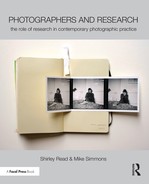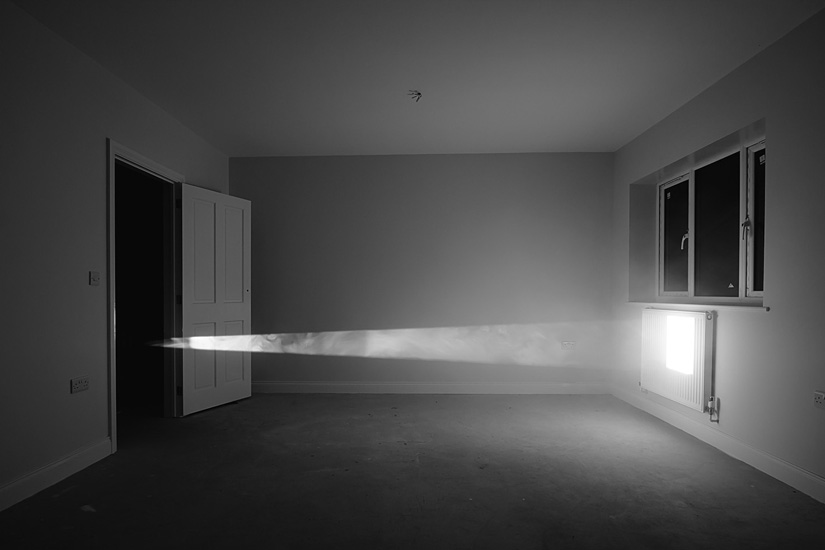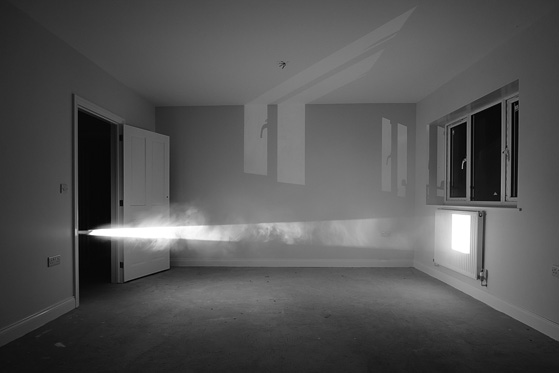Case Study
Charlotte Fox
MA Photography—De Montfort University, Leicester
RESEARCH REPRESENTS a crucial part of the intricate web of ideas and processes that build and create momentum whilst developing any new project, and it has taught me how to make the most of my ideas. I feel that research creates its own level of energy, which has led me to ask questions such as, ‘What if I did this?’ Research encourages me to continually challenge what I’m doing and establish new ways of thinking about my projects, which can be hard work. But, although it can be hard, it has made me more critical about myself, which is a crucial part of the research process for me. I have never felt, for example, that research got between me and being creative. Very early on I always understood that being able to take a step back from the work, to understand what I was achieving photographically, was equally important; to create some space to reflect on the project itself outside of the creative bubble.
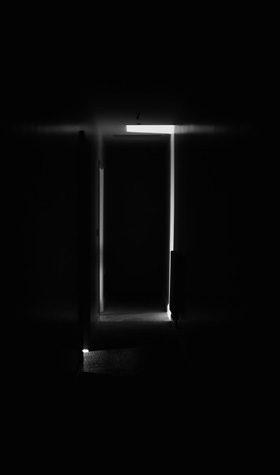
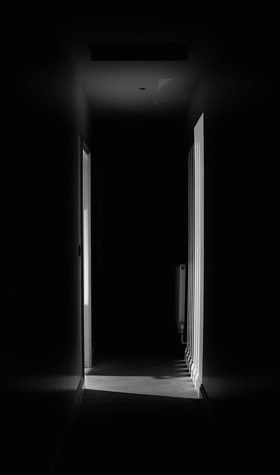
From the series: Spatial Flux.
Photograph by Charlotte Fox, 2013.
For a number of years now I have been interested in space (height, width, depth), the ‘thing’ we are surrounded by or contained within, and how the transformative nature of photography can alter our perception of space. I have often been a fan of using photography as a form of early research; I think this stemmed from the artist Gordon Matta Clark where I always felt he used his camera as a form of investigation of the spaces he had worked with. I often photograph specific spaces or areas that I intend to work within. These initial photographs allow me not only to acquaint myself to the space, but to also pick up natural occurrences that I could then possibly exploit and harness in some form of critical investigation. This has happened twice during my Master’s, which has fed into four individual projects.
Practical research, therefore, is crucial to my working methods in terms of using the right equipment to achieve the results I want, and if it doesn’t exist I either make it from scratch or modify existing hardware. So, I experiment a huge amount to ensure my work is technically sound, and that the aesthetics I am searching for are relevant to what I’m trying to achieve; there is no room for compromise. However, the biggest trap that I think most people fall into is being consumed by technique at the expense of developing the idea. I have gone through a project where the technical side took over and I lost what I was trying to say with my photographs. But then, having said that, I have also weakened an idea by not executing the technical side well enough.
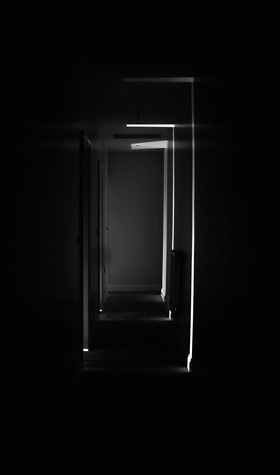
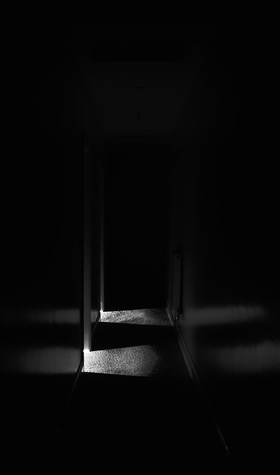
I felt that the Imaginary Time series struck a good balance between the technical and conceptual strands of the work, and that was down to the research. Imaginary Time is a photographic series and video work developed from an earlier project, Spatial Flux, which I feel also demonstrates the importance of research in the evolution of one project and its influence and inspiration for a new work. The initial steps I took with Imaginary Time were to re-visit my earlier research in order to see if any avenues of thought were worth exploring that I had previously dismissed or put aside.
Spatial Flux employed what I have termed ‘light performances’, namely the control of artificial light using the unique character of the architecture within a specific space; in this case the doorways leading off a corridor in a domestic building, which were used to restrict the light allowed to enter that space. Whenever I came across an artist who used artificial light I also questioned why they used this light form and how that related to my work. This creates a critical dialogue between the research and my own work. Sometimes, how much they differ is just as important as the similarities and teaches you what you don’t want.
It was through this that the idea of performance was revisited from several articles already found, which opened up some defining aspects of Imaginary Time, especially when discovering installation light artist Anthony McCall, who in these early stages demonstrated to me that light could be a physical object too—as a light beam. This physicality became an obsessive idea for me, as I could use it to interact with the space compared with the previous light experimentations. Although shadows had been extremely prominent in the earlier work, I had focused on light as the tool, allowing shadowing to be a by-product of this. By reversing this and considering shadow as a tool instead, I hoped to generate a different mind-set for the new project.
The series used two independent light sources to explore the defining constraints of architectural space. These combined lights capture the movement of time through a photographic sequence, as though a performance occurred for the viewer with the space providing the auditorium, and articulates to me the fragility of light and space, and their dependency upon one another. Creating the light beams was one of the challenging aspects of Imaginary Time, and I took two avenues of research at this time. I prolifically researched artists who use light, so not only could I gain technical information but also on what the light connotes in its application. I also consulted with several technicians over this period in order to create a physical beam of light and this was achieved by an extended period of practical trial and error. Aside from this specific research, I also looked into artists and theorists within a range of different creative disciplines, including sound art, chronophotography, sculpture, architecture, installations and site-specific art, performance art, and virtual reality, all of which allowed me to expand upon the idea of light, time and space, which helped in the development of Imaginary Time.
I document everything I do thoroughly in order to keep track of things. I find the easiest method for me is to use a loose-leaf folder. This is mostly because, although I still work chronologically, my research is continually expanding and I need to regularly update or extend the information I record. I keep two types of record; one logs all of the practical experimentation and the other all of my contextual research. Adding notations to both helps me to maintain continuity between my practice and the various forms of information that inform my thinking. Another key thing is that over time my logs have developed into a substantial archive that I can refer to again and again.
I feel that now I have established a way of working that suits my personality and works for me. I am acutely aware of the importance of research to my development as an artist, as it provides stimulation and credibility for my work. And I feel that the whole point of research, finding and interpreting different forms of information feeds the creative process and has enabled me to gain confidence and insight that together have helped shape me as an artist, and through this I have begun to develop my own creative voice.
Interview by Mike Simmons
